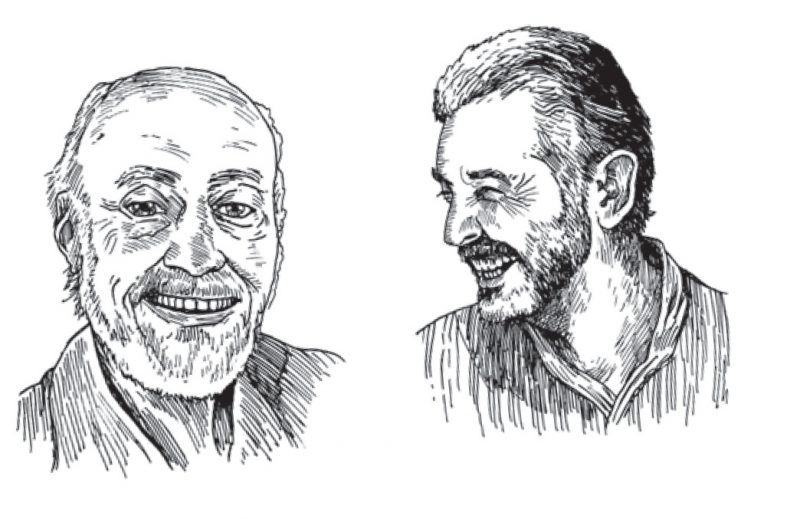The human appetite for devotional guidance remains as voracious as ever. In the last half century, that guidance has come increasingly from the East, in the form of proliferating yoga studios and self-help best sellers, the rise of meditation, and the slowly increasing awareness that the earth’s health has a direct relationship with our own well-being. Many figures have been responsible for the migration of Eastern thought into Western culture: Alan Watts and D. T. Suzuki opened minds to Zen Buddhism, B. K. S. Iyengar opened bodies to yoga, and Ram Dass has spent fifty years opening what he calls our “spiritual hearts.”
Ram Dass is the gentle uncle of the new age, softly orating to barefoot devotees on grassy hillsides, forever laughing. He never formed the relationship with pop culture as, say, Deepak Chopra and Eckhart Tolle did, and never experienced the ethical backlash that Maharishi Mahesh Yogi and Bikram Choudhury faced. Instead, Ram Dass has worked quietly toward a position of total vulnerability with his audience, folding his failures, maladies, and difficult life choices into his teachings.
At the heart of Ram Dass’s spirituality is the story of his metamorphosis. Born Richard Alpert, he was trained as a PhD in psychology and worked alongside Timothy Leary during Harvard’s brief period of psychedelic experimentation—a moment that also produced the popular health adviser Dr. Andrew Weil. But at the age of thirty-six, he rejected the academic path, abandoned his neurotic intellectual tendencies, and traveled to India. There he found his new path as a student of Hindu guru Neem Karoli Baba, who gave him the sacred name Ram Dass (which translates to “servant of God”) and foresaw his future as a spiritual teacher.
In 1971, Ram Dass wrote of these experiences in Be Here Now, the work for which he is best known. An experimental tome of images and text, memoir and philosophy, poetry and aphoristic teachings, the book is a kind of source text for hippie metaphysics. Its influence on culture has been enormous—in part due to endorsements by Steve Jobs and George Harrison—and it is largely responsible for the form and tone of contemporary new age literature.
In 1997, at sixty-five years old, Ram Dass suffered a stroke and, as a result, expressive aphasia, which left him initially speechless. He considers the experience to be a moment of great spiritual failure, as he was unable to transcend his state of suffering. But he also interprets it as an act of grace that revealed the work he needed to do for the rest of his life.
In the twenty years since the stroke, Ram Dass has regained many aspects of speech and language, though he often lands...
You have reached your article limit
Sign up for a digital subscription and continue reading all new issues, plus our entire archives, for just $1.50/month.
Already a subscriber? Sign in





